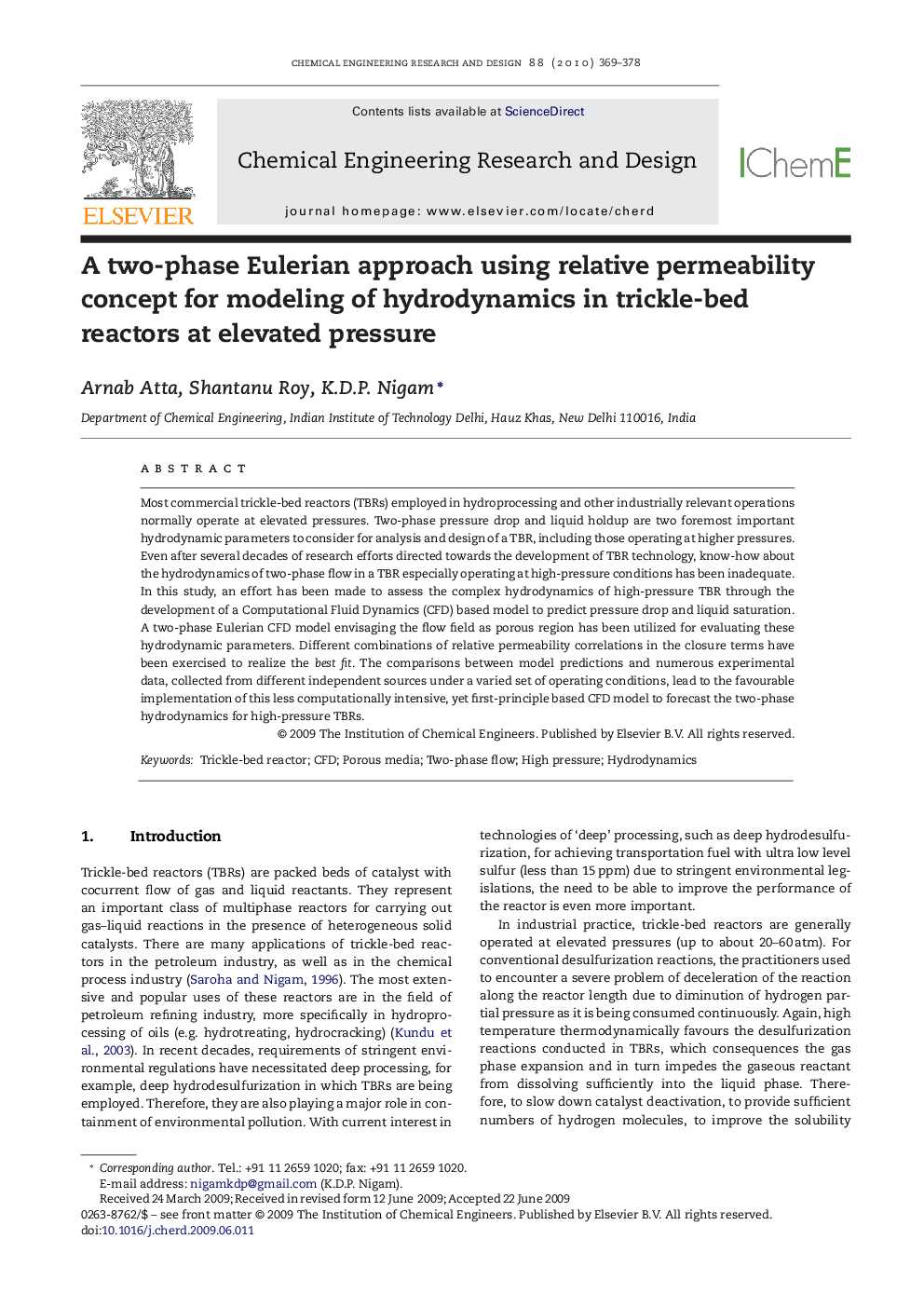| Article ID | Journal | Published Year | Pages | File Type |
|---|---|---|---|---|
| 622205 | Chemical Engineering Research and Design | 2010 | 10 Pages |
Most commercial trickle-bed reactors (TBRs) employed in hydroprocessing and other industrially relevant operations normally operate at elevated pressures. Two-phase pressure drop and liquid holdup are two foremost important hydrodynamic parameters to consider for analysis and design of a TBR, including those operating at higher pressures. Even after several decades of research efforts directed towards the development of TBR technology, know-how about the hydrodynamics of two-phase flow in a TBR especially operating at high-pressure conditions has been inadequate. In this study, an effort has been made to assess the complex hydrodynamics of high-pressure TBR through the development of a Computational Fluid Dynamics (CFD) based model to predict pressure drop and liquid saturation. A two-phase Eulerian CFD model envisaging the flow field as porous region has been utilized for evaluating these hydrodynamic parameters. Different combinations of relative permeability correlations in the closure terms have been exercised to realize the best fit. The comparisons between model predictions and numerous experimental data, collected from different independent sources under a varied set of operating conditions, lead to the favourable implementation of this less computationally intensive, yet first-principle based CFD model to forecast the two-phase hydrodynamics for high-pressure TBRs.
